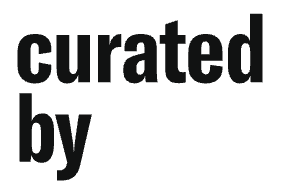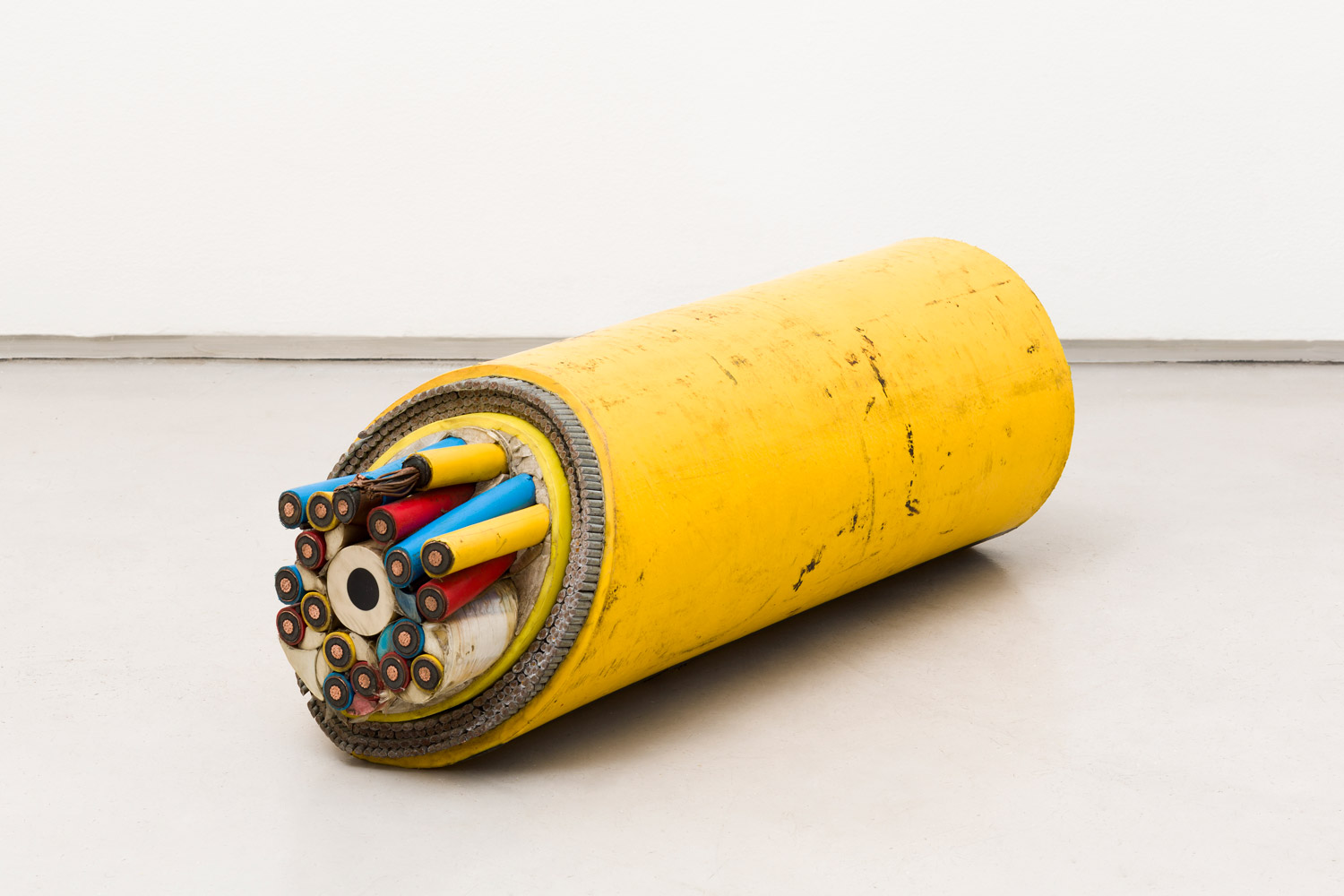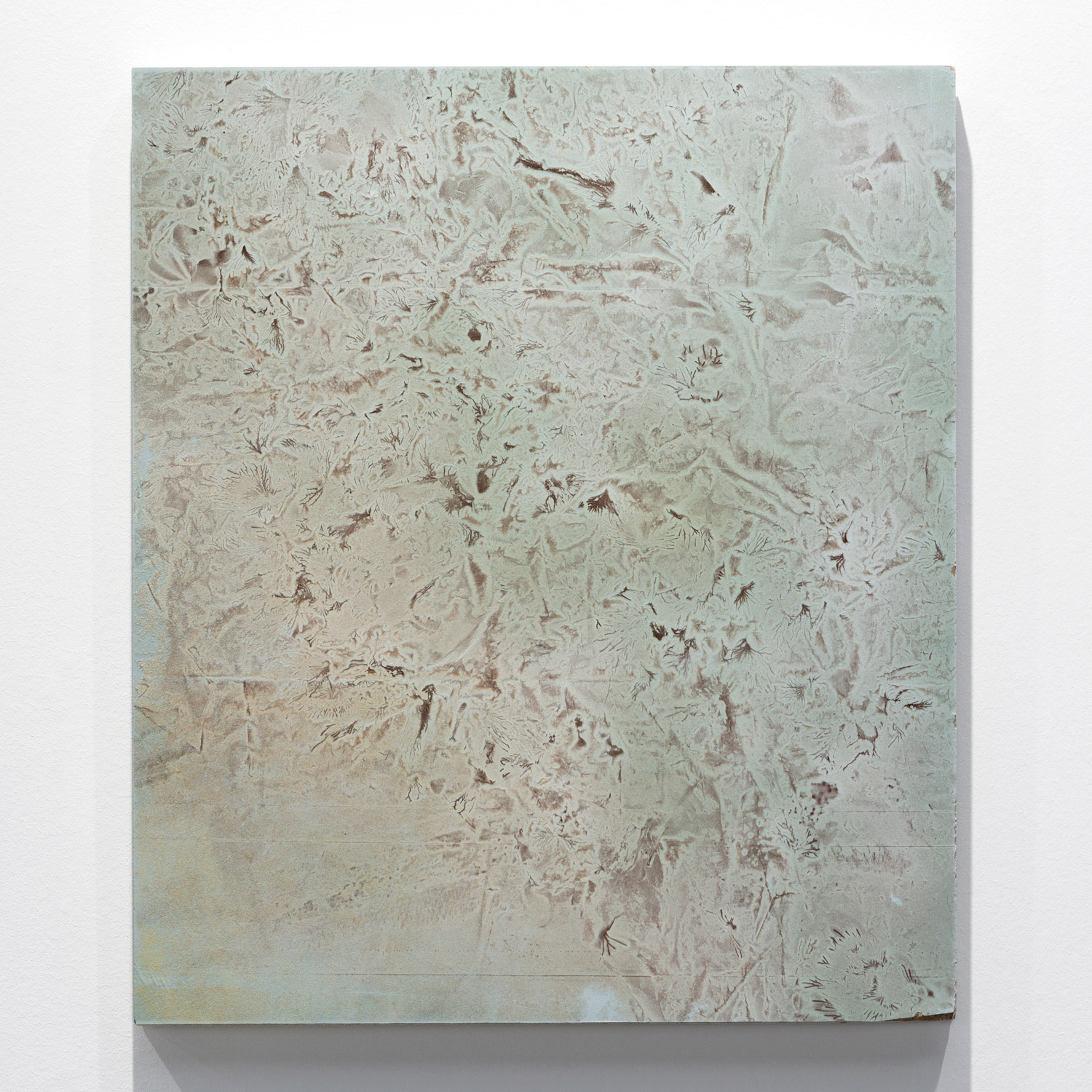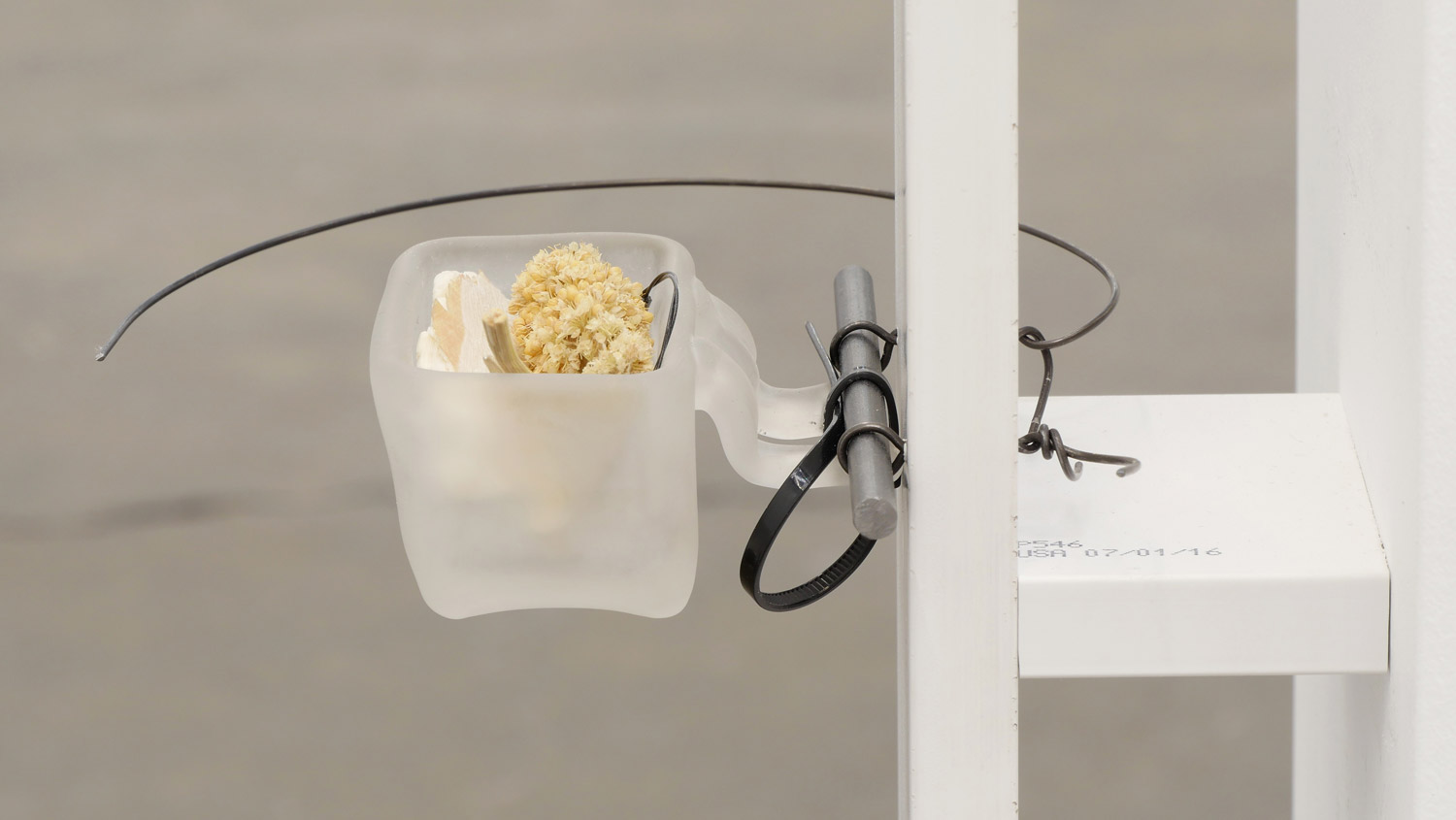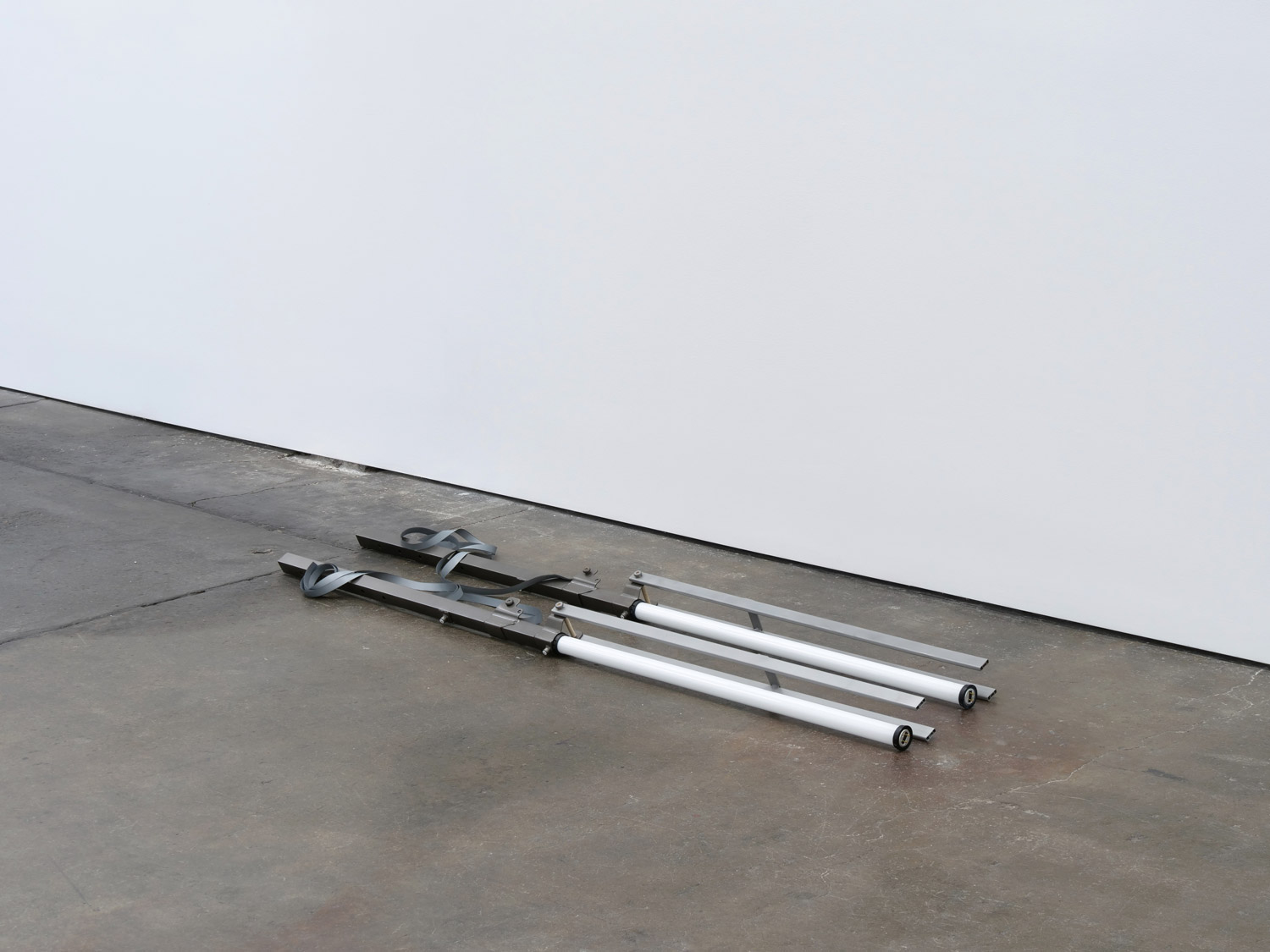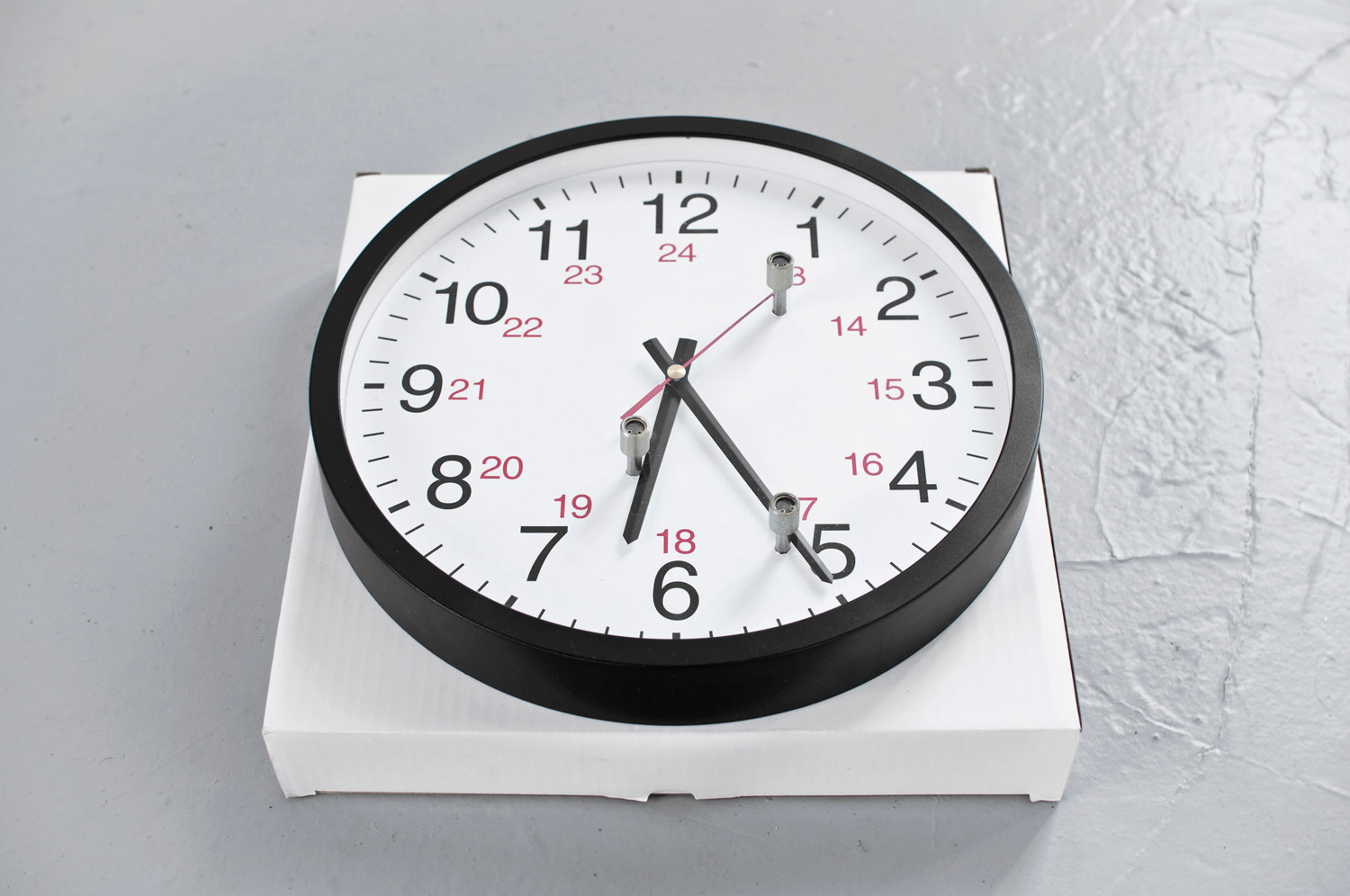VIN VIN Gallery curated by Alex Bacon
„Transmissions“

www.vinvin.eu
Curator(s):
Alex BaconArtist(s):
- Nina Canell
- K.R.M. Mooney
- Nathlie Provosty
- Jesse Stecklow
Exhibition text
More
Artists, as well as the general public, have long been concerned with the different rates of transmission – of energy, informa- tion, goods, bodies, and beyond – that we experience in the contemporary world. As when Robert Smithson, in his nonsites of the late 1960s, juxtaposed steel, and thus the accelerated expenditure of energy in- volved in factory fabrication, with dirt and rocks, and thus the slower cycles of the earth. Today these paces range from the hyper-speed of digital technology, to the older, and slower, modes that coexist with the contemporary – like those of craft production – to the nonhuman tempos that persist even as they are endangered, such as those of the natural world.
The five artists in this exhibition explore issues suggested by various modes of transmission. Lewis Stein’s Flashing Lights (1978) anchors the exhibition in a not-so-distant prehistory of the present. This work isolates the basic life-force of Western modernity, electrical transmission, reducing it to a humorous yet sinister tautology of a closed circuit consisting of two standard, industrial-grade light bulbs that turn on and off in an alternating fashion.
Stein’s photograph of a surveillance camera (1983–84) references another closed circuit: the camera transmits what it observes to an attendant, who was once human, but today is most often a digital database. Now a static subject, the camera’s transmission is metaphori- cally severed and in the process agency is transferred back to the viewer, who contemplates the camera’s mute form.
Jesse Stecklow’s work similarly engages questions of feedback and the trans- mission and circulation of data within systems he builds himself. An air-sampler work from 2014 is paired with a new sculp- ture that responds to a particular finding in the data collected by the earlier work: the ubiquity of corn-based oils. A corn- based anagram playfully highlights the diversity of uses of the common crop and the elaborate systems around them, espe- cially in the US, where corn production is heavily subsidised by the government.
The materials in K.r.m. Mooney and Nina Canell’s sculptures originate in the com- mercial world. For example, the electrical ribbon in Mooney’s Violet (ssi) I, and the subterranean cable in Canell’s Brief Syllable (Truncated). As in Stein’s photograph, they have been severed from that world, their energy depleted in their removal from the flows of capital as postindustrial detritus cast off in capitalism’s drive towards ever- greater efficiency.
The show is rounded out by a diptych by painter Nathlie Provosty. Its curving passages pull us around the abstract, pictorial space and, in doing so, invite us to consider imaginative alternatives to the oppressive conditions highlighted by the machinic physicality of the other works.

